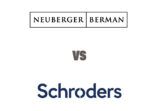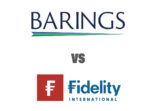Many small-cap equity funds have emerged as the top performing funds in Asia, beating their large-cap counterparts over a three-year period.
Small-cap indices in China and India, the two key markets in the region, have outperformed the large-cap indices during the same period, lifting returns of funds with exposure to these markets.
However, markets are turning volatile now. Indian markets are choppy due to disappointing corporate earnings and some disappointment with progress on the much-anticipated reform programme.
In China, Chinese retail investors borrowed on margin and fuelled a rally primarily in the small- and mid-cap segment. But the recent unwinding of leveraged positions and sharp consecutive declines in the index has pushed Chinese authorities to intervene and attempt to stabilise the market.
In short, markets are volatile and small caps are an asset class known for violatility. Therefore, Fund Selector Asia this week puts the HSBC Asia ex-Japan Equity Smaller Companies Fund against the PineBridge Asia ex-Japan Small Cap Equity Fund, head-to-head.
Both funds seek to invest in a diversified portfolio of small-cap companies in the region.
The HSBC fund defines small-cap companies as those with a maximum market capitalisation of $2bn at the time of purchase. On the other hand, the PineBridge fund invests in companies with a market capitalisation of less than $1.5bn. The PineBridge fund can also invest in mid-cap companies, according to its investment objective statement.
The Luxembourg-domiciled HSBC fund has been in operation since November 1997 while the PineBridge fund was launched in April 2006. The HSBC fund is more than six times larger with $525.2m in assets under management (on 31 May), compared to the PineBridge fund’s $81.2m.
While both funds generally have a focus on small-cap companies, their investment styles differ.
Ryan Sim, head of investments for global wealth management at OCBC Bank, provides a comparative analysis.
Investment strategy review
The HSBC fund is focused on value stocks while the PineBridge fund has more focus on growth stocks, said Sim.
The HSBC fund leans towards small-cap stocks and has an average portfolio market capitalisation of $1.05bn, he said, citing Morningstar data.
The PineBridge fund shows a bias toward mid-cap stocks and has an average portfolio market cap of $2.86bn.
Also, the HSBC fund is less concentrated than the PineBridge fund. The top 10 holdings of the HSBC fund account for nearly 20% of its assets. On the other hand, the top 10 holdings comprise 35% of the PineBridge fund’s assets.
“This reflects different portfolio construction styles. The PineBridge fund shows a slightly higher level of conviction in their top [stock] ideas.”
“One interesting observation is that both funds’ top 10 holdings differ completely from each other, indicating the wide universe of opportunities to find alpha in this market cap segment,” Sim added.
Interestingly, the PineBridge fund has a higher exposure to cash and cash equivalent securities at 10.7%, compared to the HSBC fund (3.9%).
“This may indicate the [PineBridge fund] manager’s intention to build up cash to seek entry opportunities given the current volatility [in markets].”
China and Hong Kong top the country allocation for both funds.
















